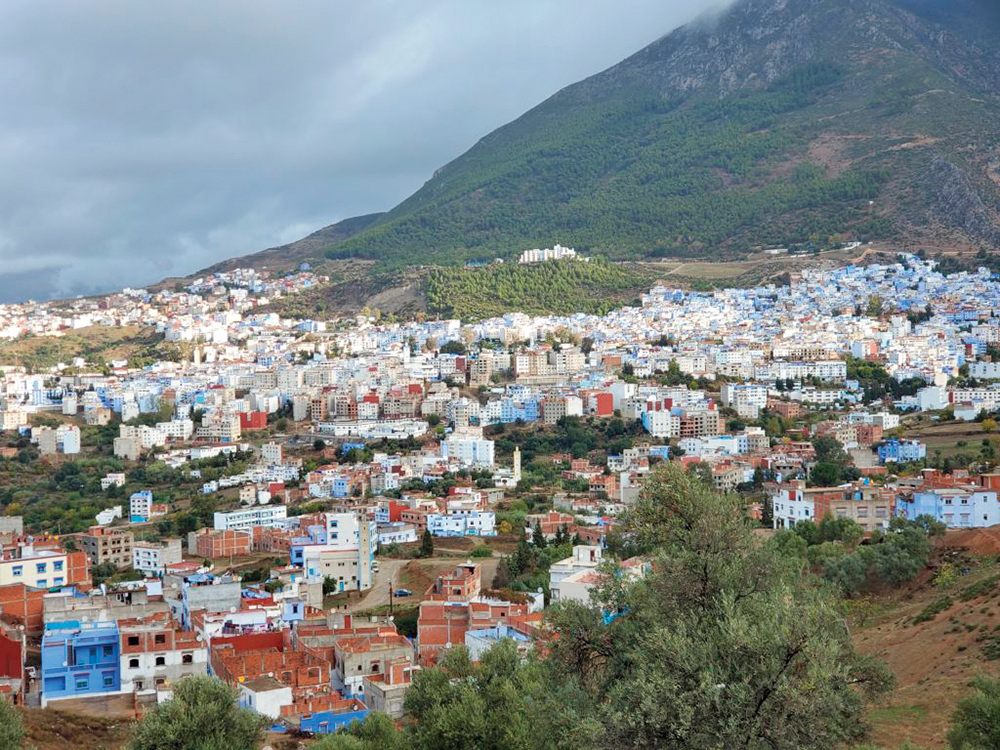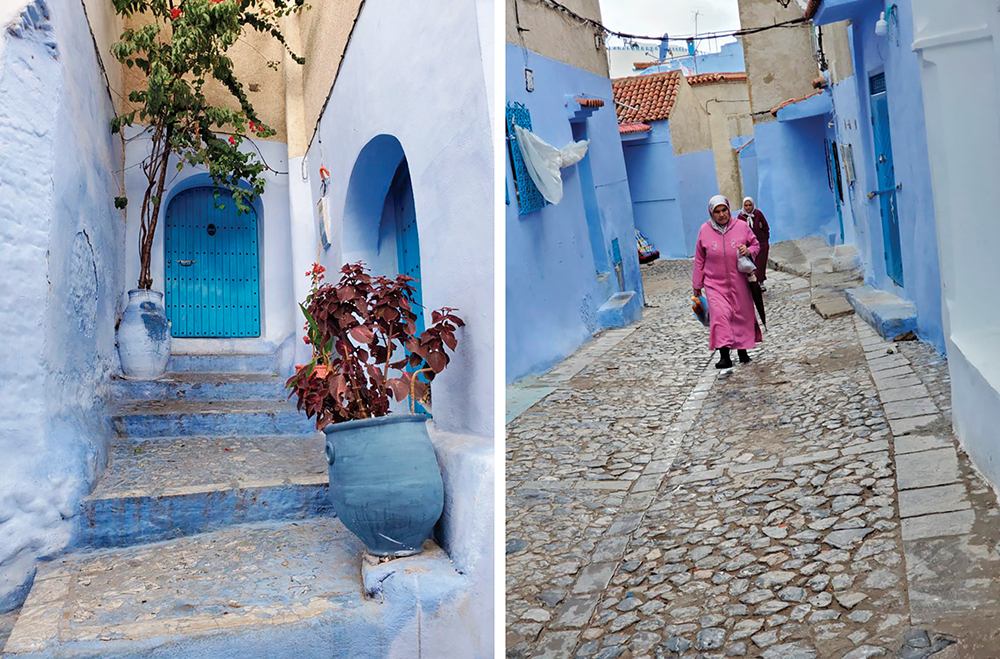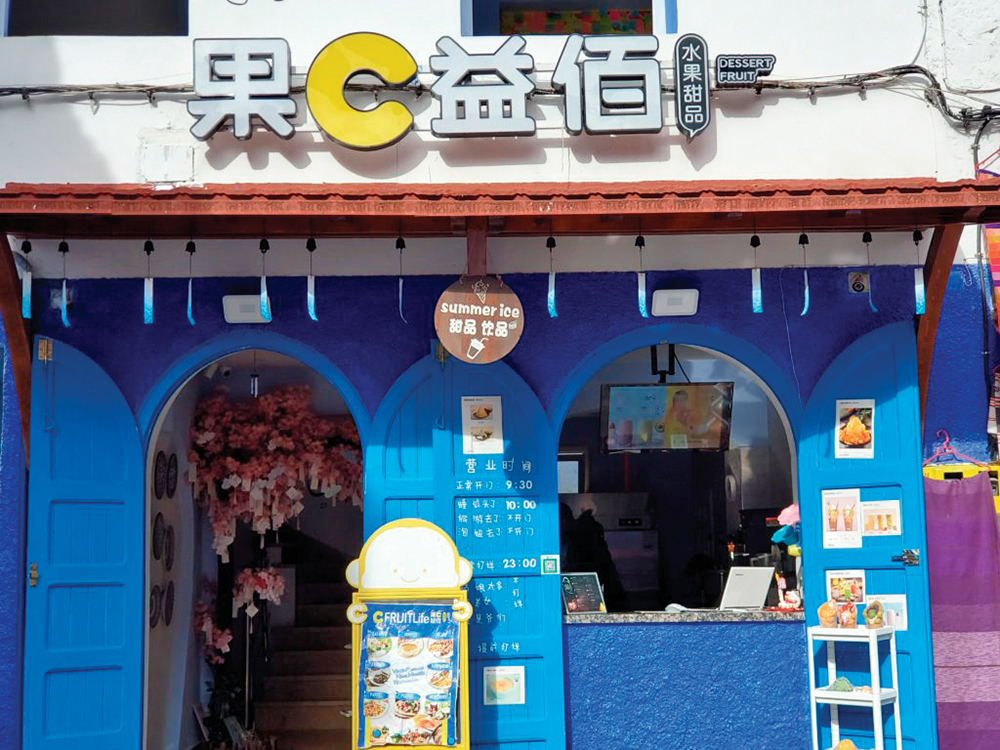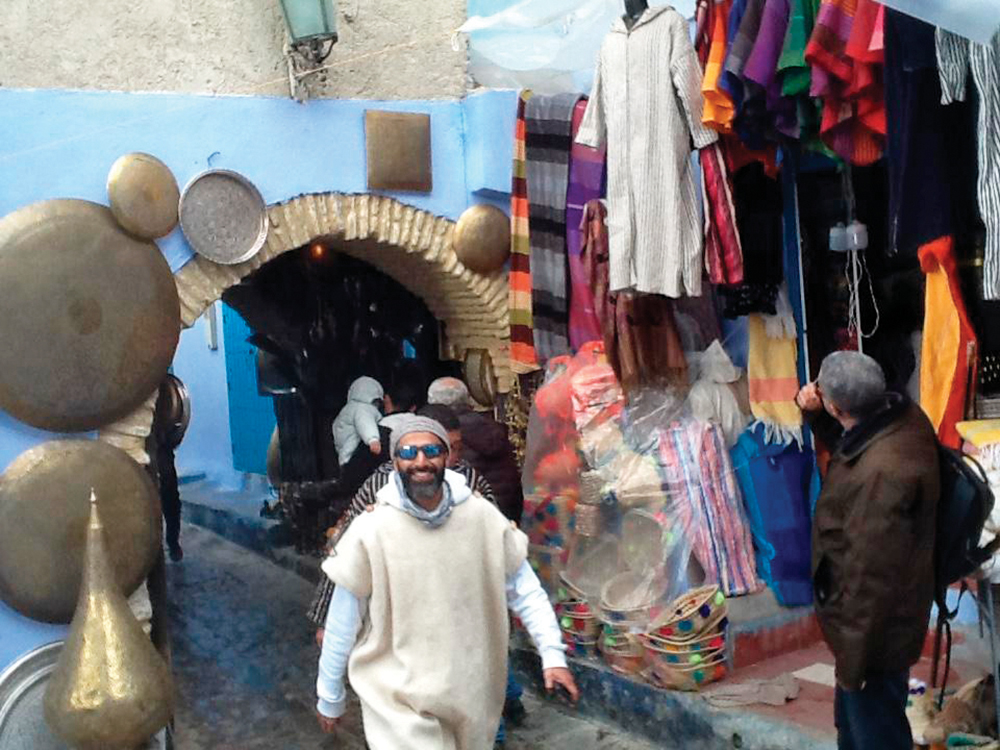
One of Morocco’s most enchanting destinations on my list is the picturesque mountain village Chefchaouen, drenched in artistic blue hues and home to approximately 45,000 residents. Nestled in the northwestern region of the country, this charming city boasts a truly distinctive charm set against the breathtaking backdrop of the Rif Mountains.
This offbeat town stands out as one of the most visually captivating I’ve encountered in Morocco, thanks to its delightful azure alleyways, streets and architecture. As a result, it has earned the endearing nickname “the Blue Pearl of Morocco.” Chefchaouen’s medina unquestionably ranks among the most charming in Morocco, offering an intimate, uncrowded and effortlessly navigable experience. It’s no surprise that this town is a highly sought-after destination and consistently earns its place as one of the country’s top spots to visit.
Chefchaouen, nestled in the Rif mountains, traces its origins back to 1471, when it was founded by a community of Jews and Moors seeking refuge from the Spanish Inquisition. The intriguing aspect of Chefchaouen azure facade has spurred various theories about its origin. One prevailing notion suggests that the Sephardic Jewish settlers who escaped the Spanish Inquisition in the 15th century brought with them the tradition of painting buildings blue.

Another theory contends that it was the Jews fleeing Nazi Germany in the 1930s who adorned the town in blue. Yet an alternative belief suggests that the blue paint served a practical purpose — to repel mosquitoes and thwart the spread of malaria. Some even propose a more symbolic rationale, positing that the blue hue was chosen to symbolize the vast ocean.
In the context of Judaism, blue signifies the sky and heaven, serving as a reminder to lead a spiritually conscious life. Among Sephardic communities, there exists a strong tradition of using blue in various aspects, and this tradition extended from the city’s Jewish quarter, gradually enveloping the entire town in vibrant blue. Another intriguing legend tells of a Jewish man who fell in love with a Spanish woman but could not be with her. In an enduring tribute to her, he painted the entire city in the same hue as her blue house.
Regardless of the true origin, the tradition of refreshing the blue paint continues today. Locals diligently repaint their houses twice a year and a month before the commencement of Ramadan, keeping the enchanting blue aura of Chefchaouen alive and well.

(Credit: New York Jewish Travel Guide)
In this neighborhood, you could spot houses adorned in various ways — some painted blue, some white and others displaying a unique half-painted appearance. Our guide, Yousef, shared an intriguing tidbit of local history with us: When Jews and Muslims coexisted in the same vicinity, they found a clever way to distinguish their respective homes. The Jews opted for blue, a color symbolizing the divine power of God in their tradition, while the Muslims favored white and green.
Yousef humorously explained, “The Jews painted the lower half of their walls blue because they couldn’t reach the upper part and the Muslims did the same with white.” The playful joke among locals is that they could only manage to paint half because their stature didn’t quite measure up to the task!
As you navigate the narrow streets of this city, you’ll encounter stone steps ascending steep slopes, providing an excellent workout for your legs. However, when you finally reach an open street or a public square, take a moment to cast your gaze upward, toward the nearby Rif Mountains. These mountains above seem to form two distinctive horns, which are believed to be the origin of the city’s name, Chefchaouen, literally translating to “watch the horns” in a local Arabic dialect.
One fascinating detail to note is the diversity of indoor shapes. “Square doors signify shops, while round ones indicate houses. If anyone wishes to make alterations to these doors, they must obtain permission from the city’s architecture office,” explained Youssef, a knowledgeable local tour guide. He also pointed out that these front door house keys have been passed down through more than seven generations of residents, originally brought by their ancestors from Andalusia in the hope of one day returning to their place of birth.
The old medina of Chefchaouen is a delightful blend of Moroccan and Andalusian influences, characterized by its vibrant, red-tiled roofs, brilliant blue structures and meandering narrow lanes, all converging around the bustling Plaza Uta El Hammam and its meticulously restored kasbah.

(Credit: New York Jewish Travel Guide)
Chefchaouen currently boasts a total of 150 hotels, which include guest houses, offering around 2,000 rooms in total. However, this capacity is struggling to keep up with the increasing influx of tourists. Interestingly, there’s a notable presence of a Chinese community in the town, with five Chinese-run restaurants and hotels. This is largely due to Chefchaouen’s rising popularity among Chinese tourists, driven by the allure of social media platforms like Instagram. The town’s captivating aesthetics make it a true haven for photographers.
Visitors flock to Chefchaouen not only to shoot music videos and commercials but also to delve into the town’s various facets and partake in activities such as hiking and exploring the nearby national parks and waterfalls. Moreover, Chefchaouen is renowned for offering unique native handicrafts, including woolen garments and intricately woven blankets that can’t be found elsewhere in Morocco.
According to the Ministry of Tourism, Chefchaouen welcomes approximately 500,000 visitors each year, now ranking as the second most popular day trip destination for Chinese tourists, following Marrakesh. This surge in interest underscores the town’s growing reputation as a must-visit destination.
In 1918, Chefchaouen was home to a small Jewish community consisting of 22 families, totaling around 200 individuals within a population of 7,000 residents. Today, the town’s population has grown to 50,000, but there are no longer any Jewish inhabitants. Each neighborhood, whether it was predominantly Jewish or Muslim, shared five common elements: a place of worship, either a mosque or a synagogue; a fountain for communal use; a school for education; a public oven for baking; and a Hamman, akin to a Turkish bath for cleansing and relaxation.

The last Jewish family bid farewell to Chefchaouen and immigrated to Israel in 1968. During our visit to the former Jewish Mellah, we had the privilege of meeting an artisan who had collaborated with Jewish families for generations. He had acquired his craft of crafting donkey saddles and baskets from these Jewish families. He shared with us, “Life was harmonious living alongside the Jewish families, and even today, the descendants of these families return to our shop to reconnect with us, coming from places like England, France and Israel.” These families had embarked on their journey to Israel in search of a better life, much like the Christian residents who had left Chefchaouen for similar reasons.
For more information, visit:
To plan a trip to Morocco, contact the Moroccan National Tourist Office or visit visit morocco.com/en.
Fly Royal Air Morocco: www.royalairmaroc.com/us-en
Ride with Train Al Boraq, a high-speed rail service between Casablanca and Tangier.
The author took part in a press trip sponsored by the Moroccan National Tourist Office.










